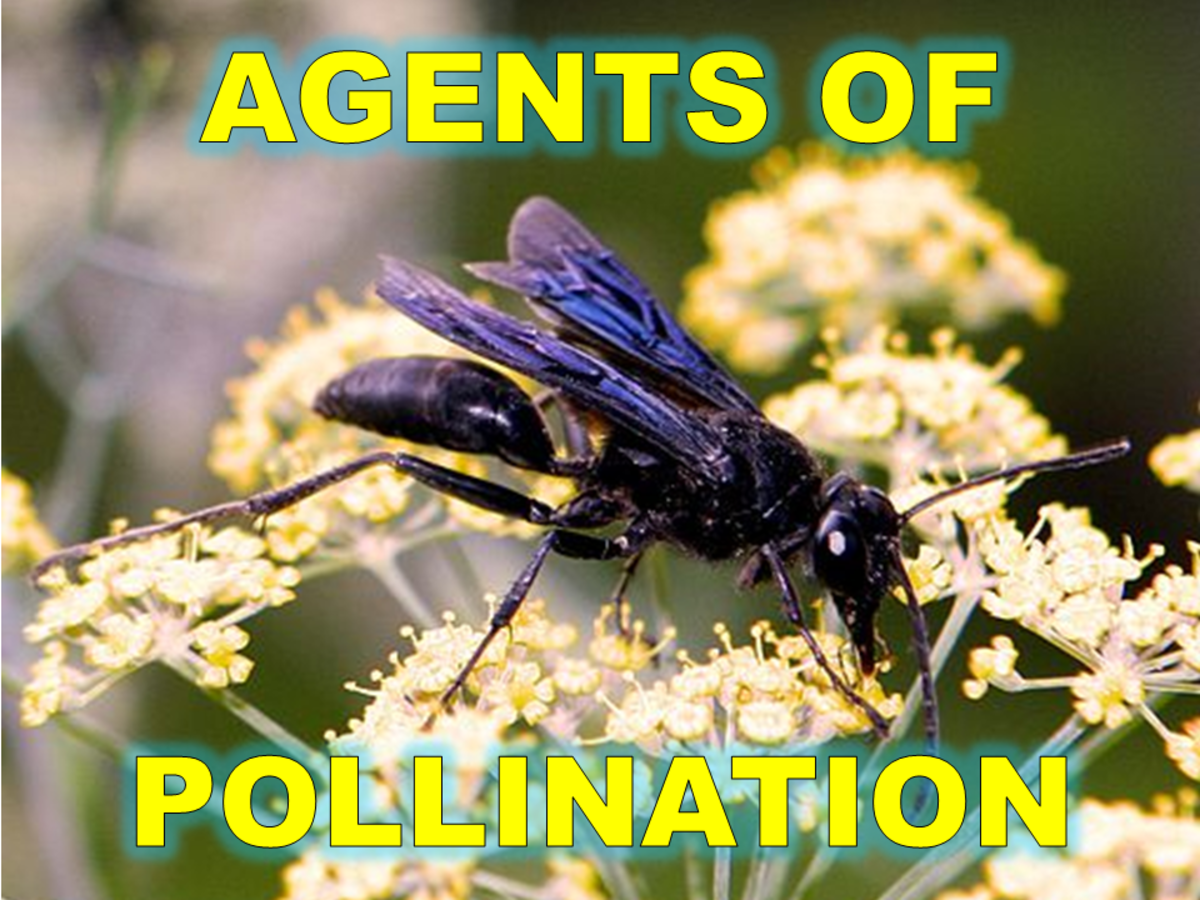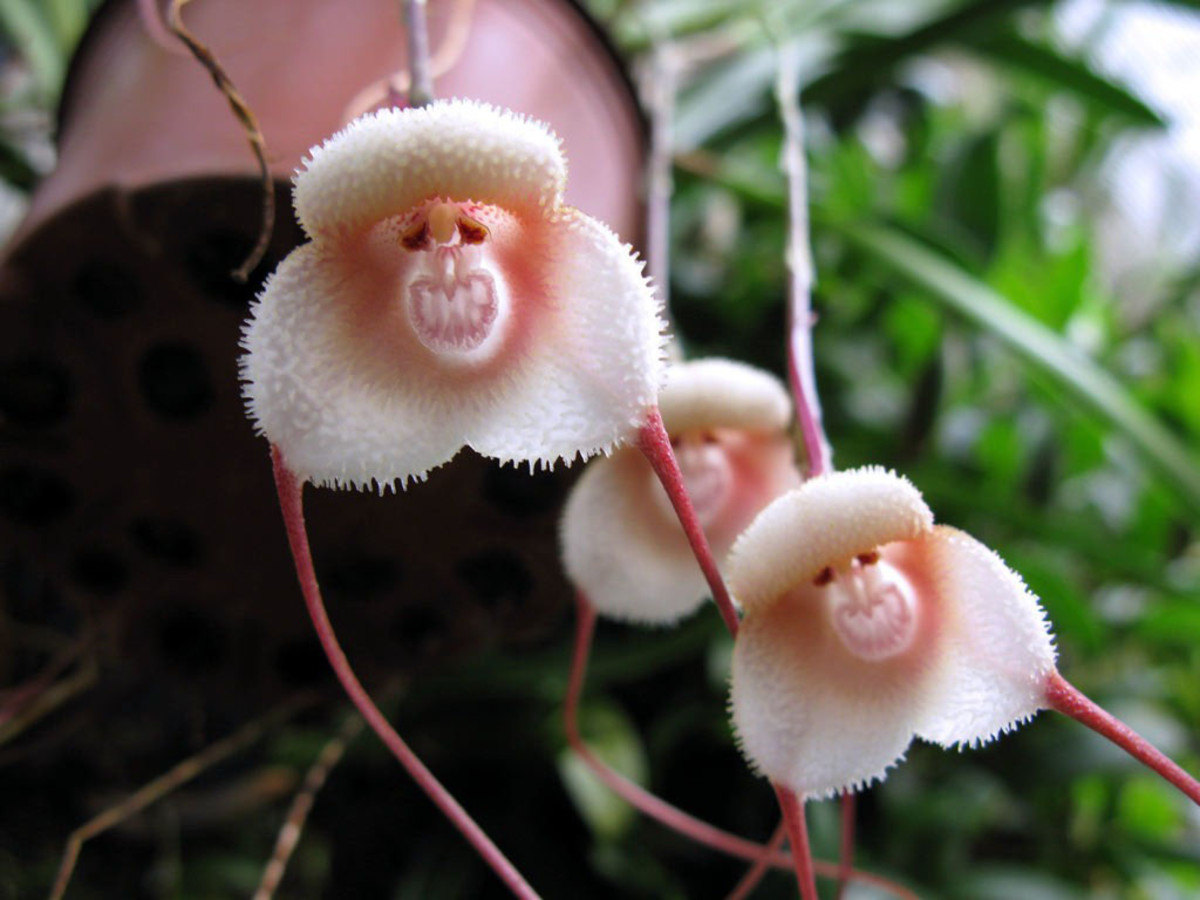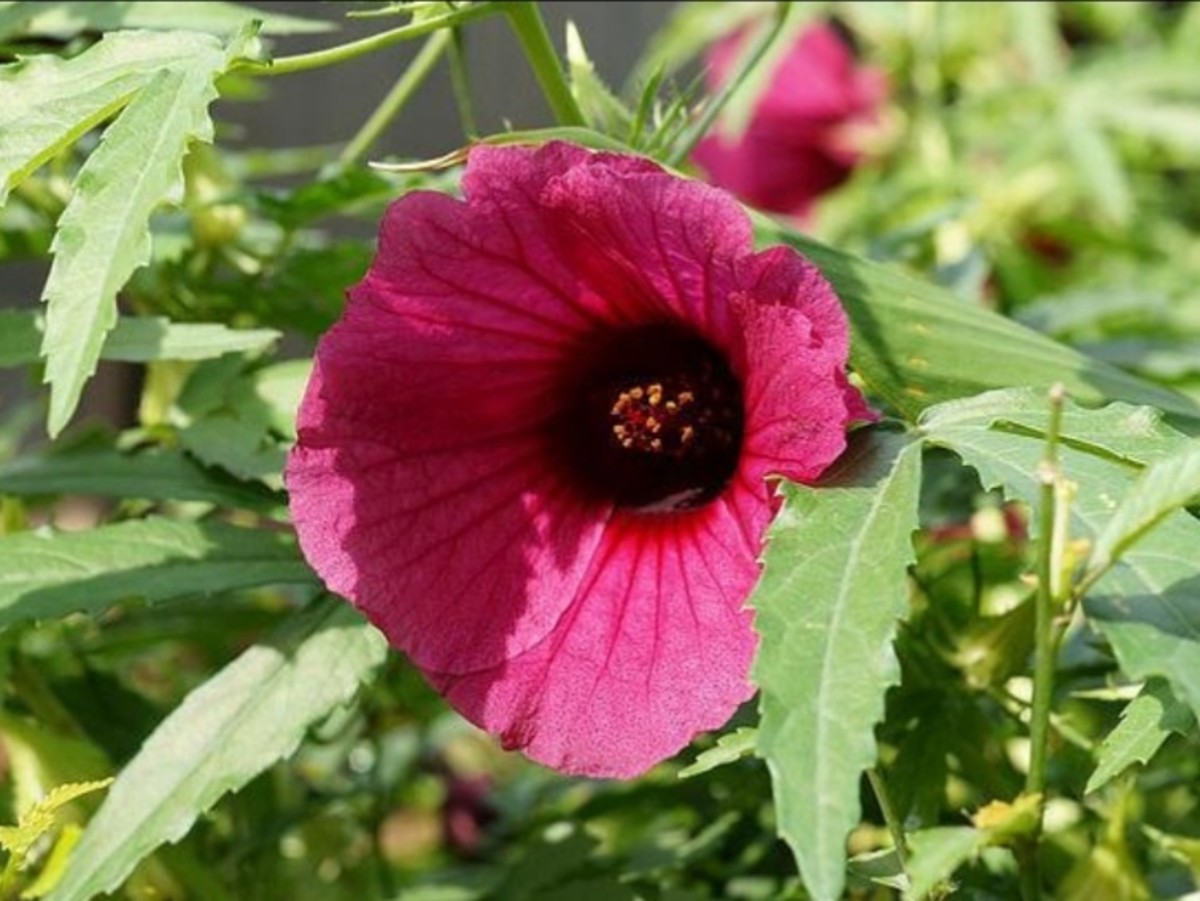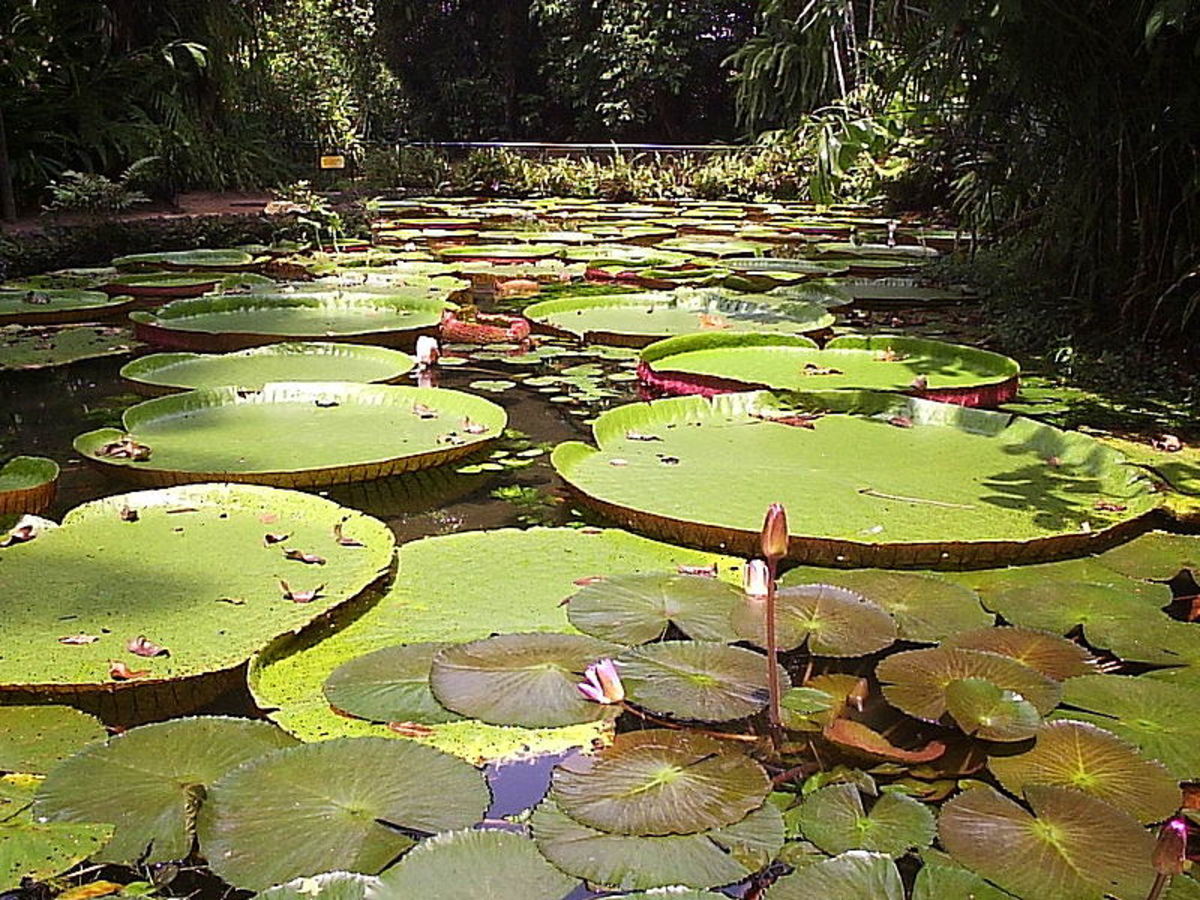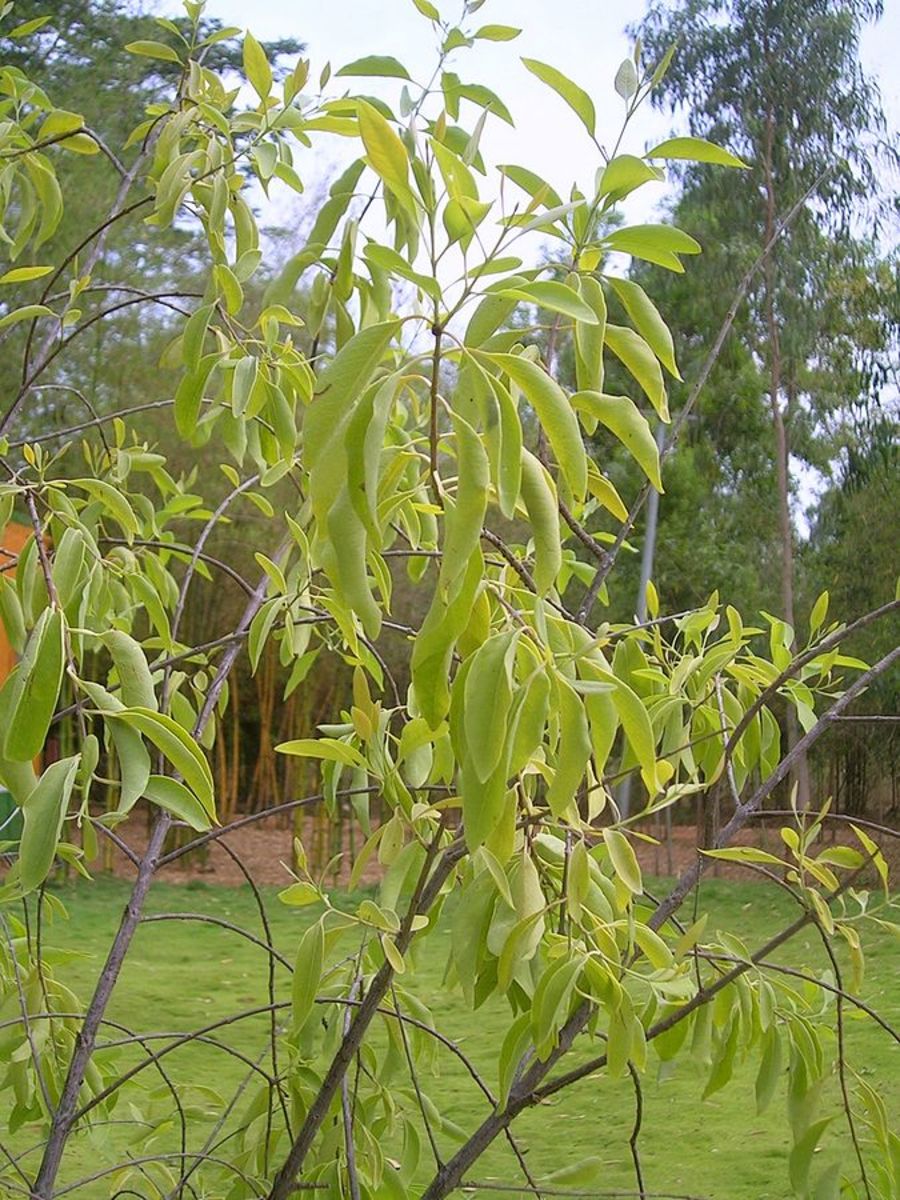Structure and Functions of a Flower
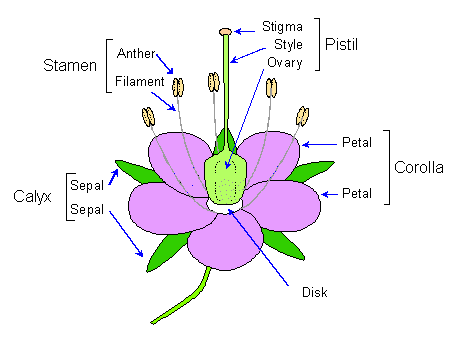
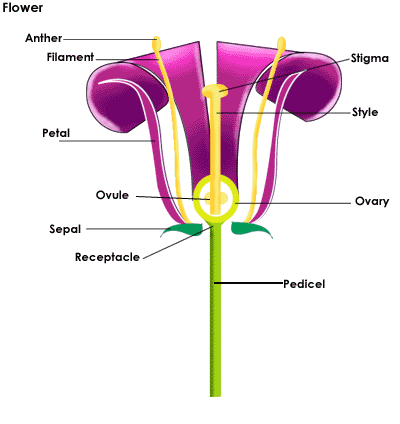
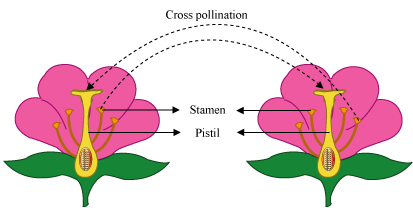
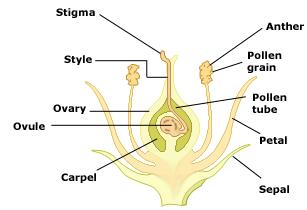
The flower is the structure in all angios-perms that is responsible for sexual reproduction. Its function is to produce seeds which will grow into new plants. There are at least 200,000 kinds of flowers with different sizes, shapes and colors. A typical flower has a pedicle, which is attached to the stem. The upper part of the pedicle, which is slightly fleshy, is called thalamus with which different parts of the flower are attached. The four maintain parts of a flower are as follows.
Calyx
The calyx is made of several green leaf-like sepals which protect the developing flower bud. In some cases, the sepals may be brightly colored. The calyx also protects the flower when it is a bud.
Corolla
The corolla is made of several, usually brightly colored, petals. The petals may take nay of several shapes or may not be present. The clays and corolla together from the perianth. The corolla attracts insects and other agents for pollination.
Androecium
Inside the perinath are the reproductive structures of the flower. The stamens are the male reproductive structures. The number of stamens varies form zero to several hundred. A stamen consists of a thin filament supporting a thick knob like anther. The anther consist pollen sacs which produce pollen, the male gametes.
Gynoecium
This is the female reproductive structure. It has three parts – the ovary, style and stigma. The stigma is the sticky part, style is a thin tube and the ovary is an enlarged area the base that produces ovules. After fertilization, fruits and seeds are produced here.
Pollination
The transfer of pollen form anther to the stigma is called pollination. The process of pollination is of two type’s namely self pollination and cross pollination.
Cross Pollination
In self-pollination, the pollen from its own stamen may reach the pistil or pollen from one flower may land on the pistil of another flower on the same plant.
When pollen is carried from the stamen of one plant to the pistil of a flower on another plant, the transfer is called cross-pollination. The most common agents responsible for cross pollination are insects, wind, water, birds and animals.
Fertilization
Pollination is the first step in making seeds. the next step is fertilization – the union of egg and sperm. This occurs in the ovary. The sperm, which is formed from pollen grains, travels down the pistil through a pollen tube. When the sperm reaches the ovary, it fertilizes an egg and seeds are formed. After it is fertilized, the egg begins to grow. The ovary grows, too. In time, the ovary becomes a fruit, containing one or more seeds. When the fruit is ripe, it may drop to the ground and the seeds develop into new plants. In this way, flowers are fertilized to produce fruits and seeds.


